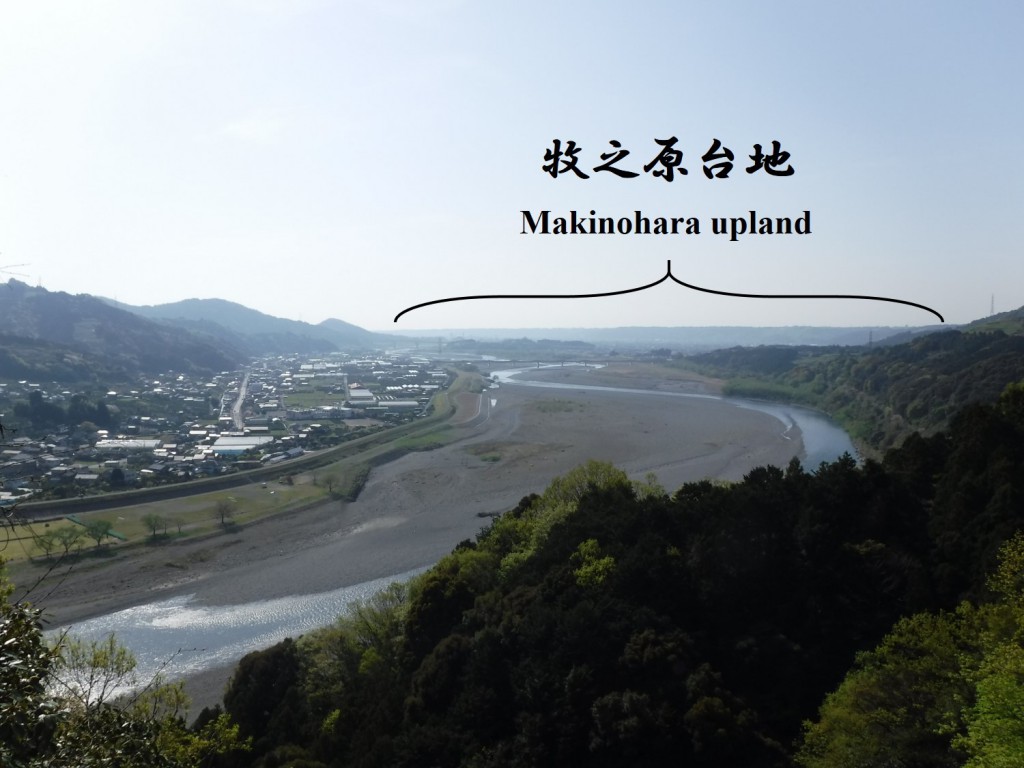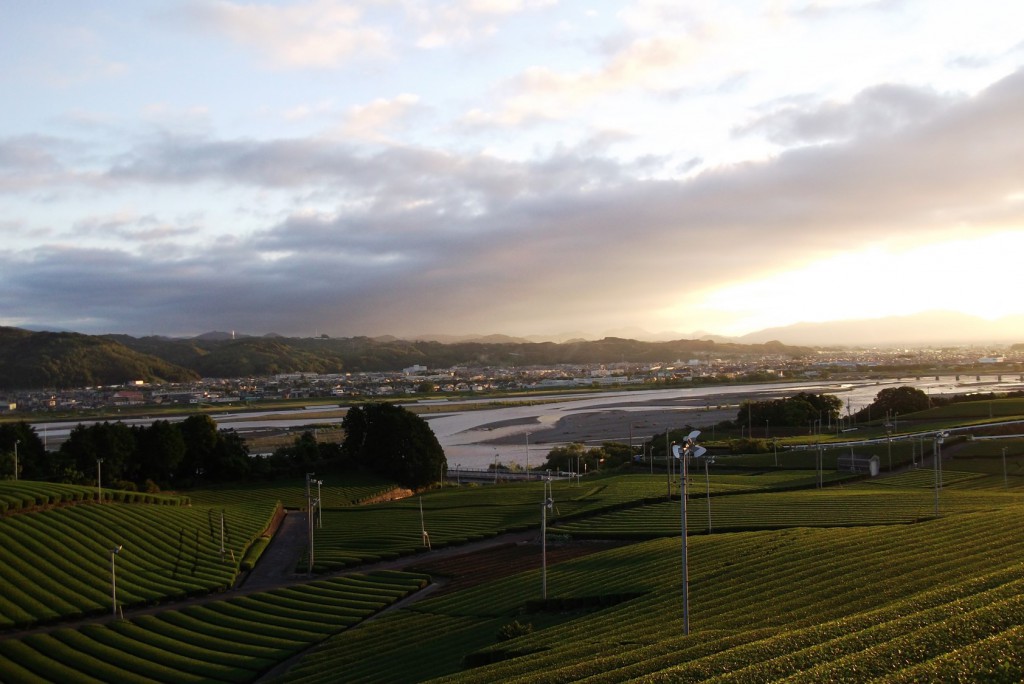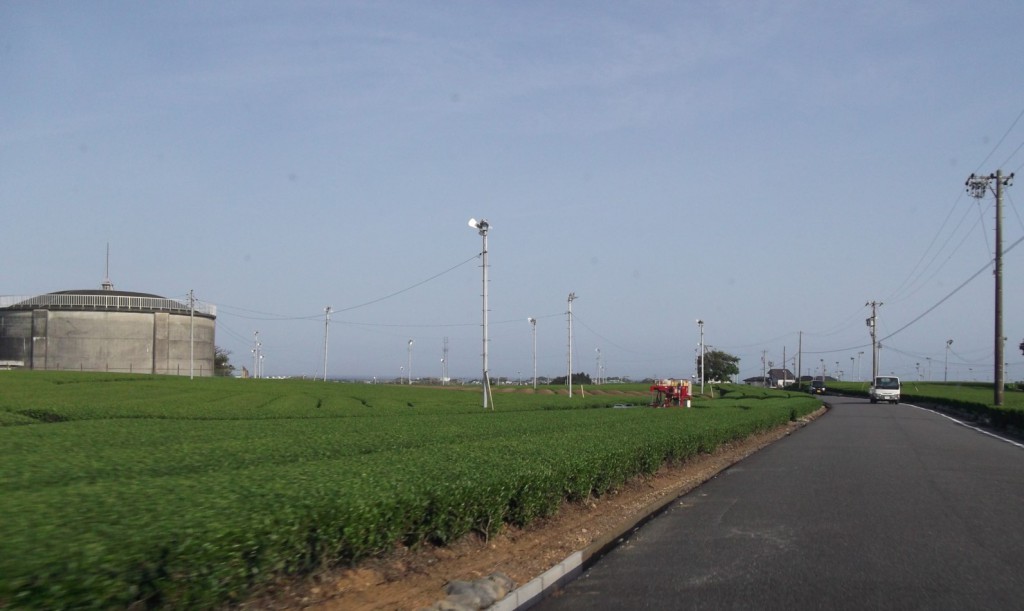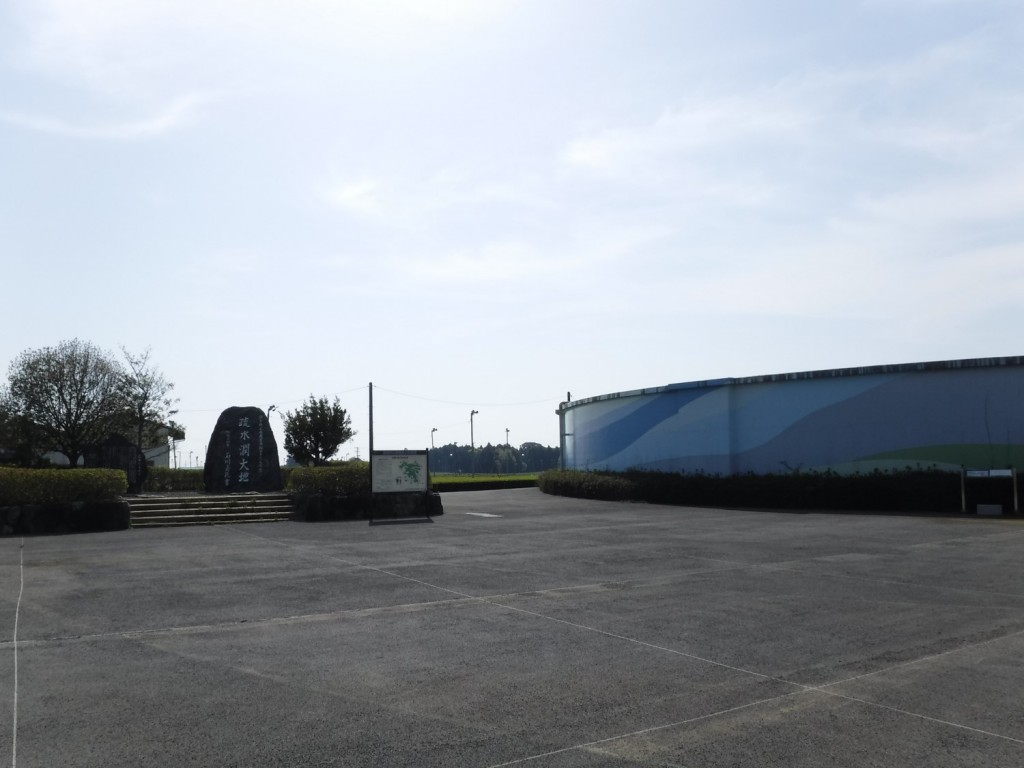
Ooi river flows south for 168km, passing through Kawane, Shimada, Fujieda, Yoshida and Yaizu, empting into Suruga bay. The river water is pumped up to Makinohara upland for agriculture, mainly tea cultivation.
Thanks to the river water, tea plants can be cultivated stably on Makinohara upland, resulting in fantastic landscapes of tea plantation harmonized with Ooi river.

A fantastic landscape of tea plantation and Ooi river viewed from Hatsukura region on Makinohara upland.
We often look water storage tanks on Makinohara upland like below.

A water storage tank next to tea plantations on Makinohara upland.
Such water infrastructure had been established based on great efforts of those who concerned over the years.
The water infrastructure, which pump up, transport and allocate the river water, had been constructed for long years since 1972. The construction was carried out as a public work of Makinohara irrigation so-called “Makinohara yosui”.
Good irrigation practices are managed by various actors, such as local associations for water management, governmental offices for public irrigation works, and of course tea farmers. In the middle of summer, Makinohara region often has less rainfall than the water amount required by tea plants. The climatic tendency has been one of the main issues within tea cultivation on Makinohara upland since the early Meiji period, when Makinohara upland was developed for tea plantation. Thus water infrastructures had been demanded by tea farmers on Makinohara upland. In the middle of Showa period, Shizuoka prefecture had started to carry out the public work to establish the water infrastructures on Makinohara upland in cooperation with 5 related cities, Makinohara, Shimada, Kikugawa, Kakegawa, Omaezaki and the Ministry of Agriculture, Forestry and Fishers. Nowadays, the public work is called as “Makinohara Hatasou”, which means the integrated establishment of farm lands and water infrastructure on Makinohara upland.
Tea farmers have responsibilities to manage the infrastructure and tea plantations, thus they participate the land improvement district to manage the established systems properly. “Land Improvement District” (LID) is generally organized by farmers, local governments and those who related, based on the Land Improvement Act according to the explanation material of MAFF.
For the purpose of proper use of irrigation, tea farmers discuss water use and plan to distribute enough water to each area of tea production.

A monument for the great efforts to establish the water infrastructure, next to a water storage tank and tea plantations on Makinohara upland.
These historical efforts, which is now succeeding, maintain the sustainable and environmental-friendly tea cultivation on Makinohara upland. Hopefully the sustainable and ecological tea cultivation will go on, and consequently sustain the multifunctionality, such as supporting our health, keeping beautiful landscapes and preserving or sophisticating culture related to tea.
